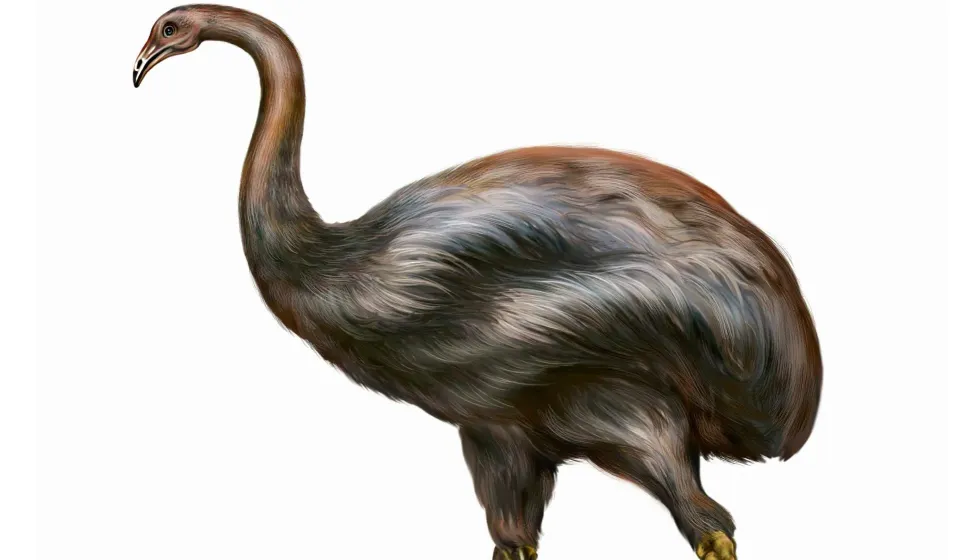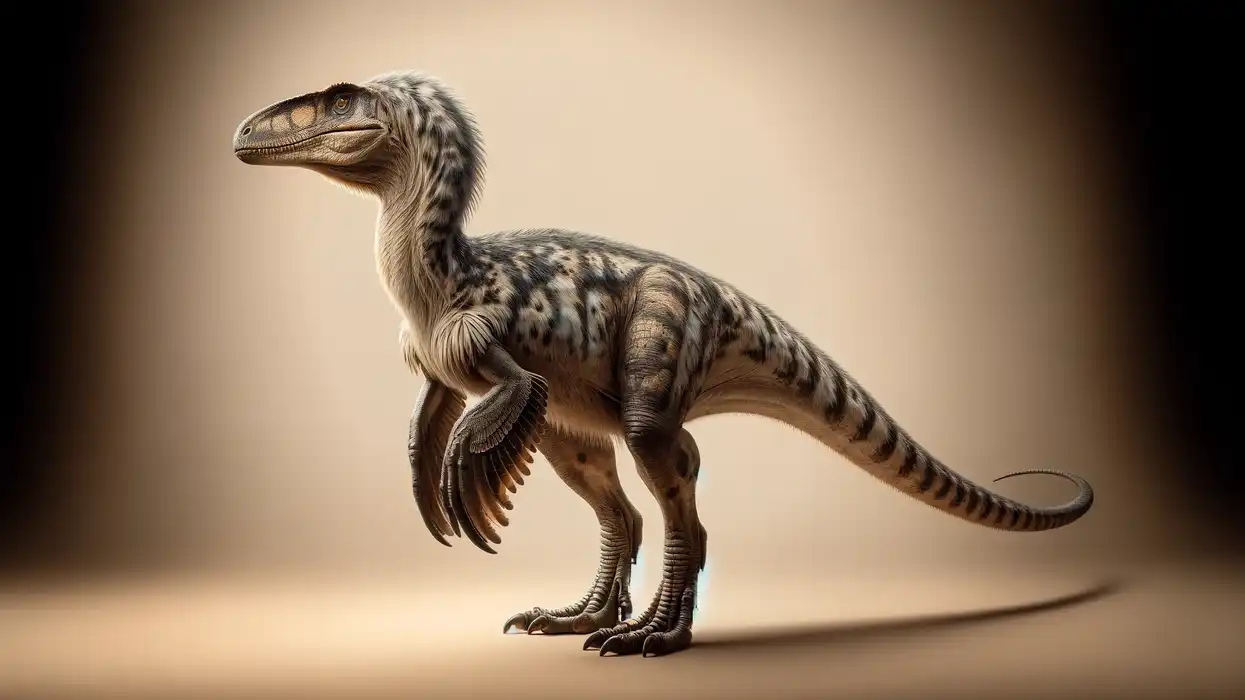Ever looked at the magnificent ostrich which is often known as the king of the land birds and wondered how a bird could be this huge? Well, till about 600 years ago the title of 'king of the land birds' was held by a massive bird of southern New Zealand, the South Island giant moa.
The moa species of birds used to dominate the land of the Kiwis and were often hunted as a sport which happens to be the reason why the moas went extinct.
The South Island giant moa was only one of the nine moa species found in New Zealand at that time and their body shares similarities with birds like ostrich and emu since they belong to the same groups of birds called 'Ratite'.
To know more about such interesting creatures of the past, be sure to check out Dodo facts and Dinosaur facts.
Giant Moa Interesting Facts
What type of animal is a giant moa?
The South Island giant moa (Dinornis robustus) was a famous bird belonging to the genus Dinornis. Moa used to be a herbivorous bird and was mostly found in forest areas in New Zealand usually at places that would receive heavy rainfall.
This South Island giant moa went extinct around 600 years ago, but there were still some species of the moa inhabiting the forests of New Zealand till about as recent as 400 years ago.
What class of animal does a giant moa belong to?
The moa species of New Zealand belonged to the animals class of Aves just as most of the birds out there in the wild. Even though the Dinornis robustus went extinct 600 years ago, their presence on the surface of earth lasted for many million years.
How many giant moas are there in the world?
These birds were found abundantly in the wild forests of New Zealand till about 700 years ago, but eventually, due to overhunting, these magnificent creatures went extinct. Today there happen to be zero moa species living in the wild.
The killing of these beautiful creatures to the point of extinction proves exactly why it is necessary to control the hunting of birds in today's time.
Where does a giant moa live?
The moa was a resident of the South Island part of New Zealand. They weren't found anywhere else in the world. The Dinornis robustus preferred living in places where it would have a huge supply of leaves to feed off on since its diet requirement was much higher than most of the other land birds.
What is a giant moa's habitat?
The moa habitat included tropical rainforests and forest patches that received heavy rainfall. This was generally the Southern part of New Zealand which had plenty of forests that received heavy rainfall.
Who do giant moas live with?
The moa happened to be diurnal in nature. They preferred living in small families instead of having a large flock like most of the other birds. Most typically a moa group would only include two parent birds and their offspring.
How long does a giant moa live?
A moa could be seen living for anywhere between 10-30 years. However, the main reason this species of birds went extinct was because of the overhunting of these birds by humans.
How do they reproduce?
There isn't much information available about the incubation period and the breeding cycles of the Dinornis robustus species of moa but it is known that the female moa used to lay a single egg.
Moa eggs used to be very large in size. Studies show that the egg used to be around 9.5 in (24 cm) in length and had a width of around 7 in (17.8 cm).
These eggs weighed around 8-9 lb (3.6-4.08 kg) and the size of a moa egg is twice the size of an ostrich egg!
What is their conservation status?
These Dinornis genus species of birds have long gone extinct and hence the IUCN has stated the conservation status of this bird as Extinct.
Giant Moa Fun Facts
What do giant moas look like?
Giant moas of the Dinornis genus used to be magnificent creatures. These birds used to be the largest species of moa and also coincidently were the biggest land birds alive during that period of time.
These birds had long necks that could elongate as much as 3 ft (0.9 m) in order to reach the leaves of taller trees. They had long legs and a dark-colored beak. Their bodies were covered in feathers typically yellowish-brown or reddish-brown in color.
How cute are they?
By looking at their bones itself we can safely assume that the size of this species of moa would have been a terrifying sight.
They also had long legs and long necks which elongated, making them look all the more scarier. This was one of the main reasons why the moa used to get hunted so much even though they were herbivores by nature.
So, in conclusion, the giant moa species of birds were terrifying and only a person who happened to be a keen bird enthusiast might have found them to be cute.
How do they communicate?
There isn't any information available about how communication would have taken place between these birds of New Zealand. However, scientific studies are being conducted to know more about the sounds these birds produce, and maybe in the future, scientists might be able to use the ancient DNA of these birds to know more about them.
How big is a giant moa?
Giant moas used to be massive creatures. They stood at over 12.6 ft (3.8 m) tall and weighed over 500 lb (225 kg)!
The South Island Giant moa was the largest species of moa found in New Zealand.
Also, the behemoths happened to be the largest species of land birds to be found in the wild. If we compare it with a bird that exists today, the giant moa size happened to be almost thrice the size of a peacock in length and weighed over 35 times more than it!
How fast can a giant moa fly?
Studies show that the ancestors of the Dinornis genus of birds used to have the ability to fly, but over a period of thousands of years and evolution, the Dinornis lost that ability and hence the giant moa wasn't capable of achieving flight.
They happen to be similar to birds like emu or cassowary when it comes to not being able to fly.
How much does a giant moa weigh?
The giant moa used to be heavy creatures. The weight range of the species of moa typically depended upon its diet and the place it was habituated to.
Through various scientific studies and research conducted over the years, it is finally known that these birds weighed over 500 lb (225 kg) which you may not be able to tell by looking at the bones of these massive birds in museums.
What are the male and female names of the species?
These New Zealand birds did not have separate names assigned to them depending upon their sex. They would simply be referred to as the 'giant moa'.
What would you call a baby giant moa?
The babies of land birds like ostrich are often referred to as chicks and therefore we may refer to the babies of moas as chicks too.
What do they eat?
These birds used to be herbivorous by nature. The giant moa diet typically consisted of leaves, flowers, berries, and fibrous twigs from various different types of plants.
These creatures loved to eat leaves and if the plant was tall and food out of reach, they would elongate their necks up to 3 ft (0.9 m) in order to reach greater heights and get food for themselves.
Are they dangerous?
Moas used to be an aggressive lot. This is one of the main reasons that's caused scientists to dub the names of their family of Dinornithidae as 'terrible birds'. They were known to be quite territorial and put up a fight against predators and hunters, but also pick on much smaller creatures too.
Would they make a good pet?
Since the moa species has been extinct for over 600 years, and it doesn't make any sense to have bones as pets, we can be sure that these creatures wouldn't possibly make good pets, but having said this, if we're to find ourselves in the presence of alive giant moas, these creatures wouldn't be welcoming in the slightest way possible!
Did you know...
The giant moa distribution is seen only in the southern island part of New Zealand and these creatures haven't been found anywhere else in the world to this date.
The giant moa life span on earth was cut short because of the Maori people back in the 1400s in New Zealand as they would find these behemoth creatures easy to hunt!
When did the giant moa go extinct?
Giant moas were hunted to extinction almost 600 years ago.
Is a giant moa bigger than an ostrich?
The moa could have been twice the size of an ostrich as a fully grown adult. That means the length and weight of moas used to be twice as much as an ostrich's. This obviously proves that they were strong enough to kill humans if they wanted to!
Here at Kidadl, we have carefully created lots of interesting family-friendly animal facts for everyone to discover! For more relatable content, check out these umbrellabird facts and mocking bird facts pages.
You can even occupy yourself at home by coloring in one of our free printable giant moa coloring pages.










